- News
- Reviews
- Bikes
- Components
- Bar tape & grips
- Bottom brackets
- Brake & gear cables
- Brake & STI levers
- Brake pads & spares
- Brakes
- Cassettes & freewheels
- Chains
- Chainsets & chainrings
- Derailleurs - front
- Derailleurs - rear
- Forks
- Gear levers & shifters
- Groupsets
- Handlebars & extensions
- Headsets
- Hubs
- Inner tubes
- Pedals
- Quick releases & skewers
- Saddles
- Seatposts
- Stems
- Wheels
- Tyres
- Tubeless valves
- Accessories
- Accessories - misc
- Computer mounts
- Bags
- Bar ends
- Bike bags & cases
- Bottle cages
- Bottles
- Cameras
- Car racks
- Child seats
- Computers
- Glasses
- GPS units
- Helmets
- Lights - front
- Lights - rear
- Lights - sets
- Locks
- Mirrors
- Mudguards
- Racks
- Pumps & CO2 inflators
- Puncture kits
- Reflectives
- Smart watches
- Stands and racks
- Trailers
- Clothing
- Health, fitness and nutrition
- Tools and workshop
- Miscellaneous
- Buyers Guides
- Features
- Forum
- Recommends
- Podcast
OPINION
Why pro cycling needs to ditch its ‘hardness’ obsession
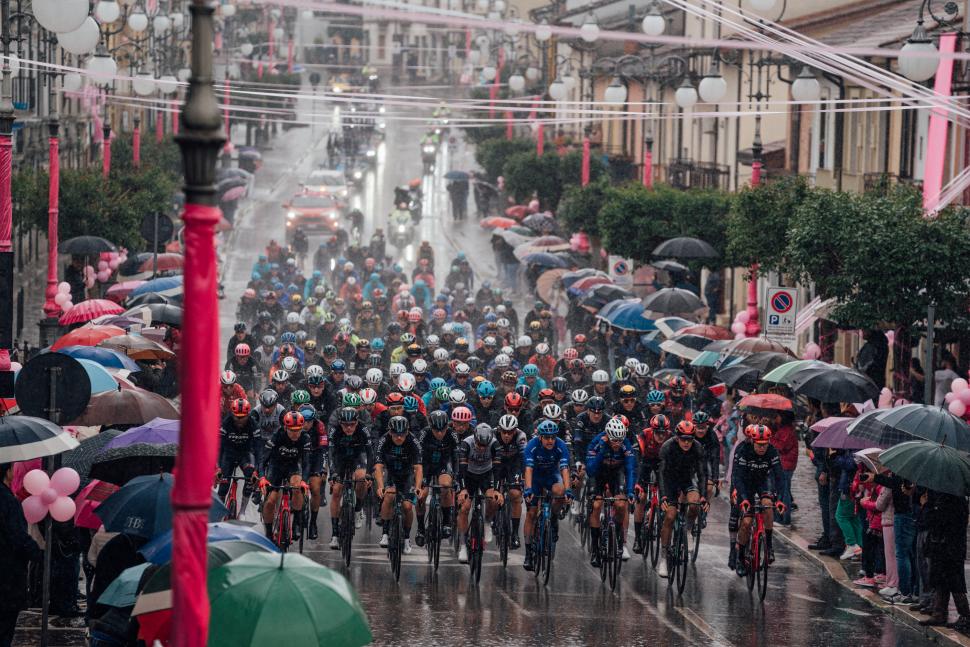 The peloton endures another miserable day at the 2023 Giro d’Italia (Zac Williams/SWpix.com
The peloton endures another miserable day at the 2023 Giro d’Italia (Zac Williams/SWpix.comThe 2023 Giro d’Italia certainly ended with a bang, the decisive time trial to Monte Lussari an uncontainable explosion of drama, twists, and suspense, played out against the vivid backdrop of glorious sunshine, a stupidly steep mountain road, and the fervent atmosphere generated by the thousands of Slovenians who flocked across the border to roar on their local hero.
Alas, it wasn’t always thus. In fact, Primož Roglič’s duel with Geraint Thomas during last week’s (mostly) sunny mountainous denouement, and the Jumbo-Visma rider’s showstopping ride on Monte Lussari, added some much-needed pink gloss to our memories of this year’s Corsa Rosa.
Zac Williams/SWpix.com
Because, it’s safe to say, the first two weeks of the 2023 edition of the Giro were a particularly grim and gruelling affair, even for a race noted for its ability to inflict suffering upon its participants.
Instead of the vibrant technicolour pushed by the Giro’s marketing team, that opening phase of the first grand tour of the season was a grey, seemingly never-ending slog, beset by illness, incident, and inclement, almost unbearable, weather.
The unwelcome return of Covid-19 decimated the peloton during the second week and led to the sudden, unexpected exit of hot favourite Remco Evenepoel and podium contender Aleksandr Vlasov, while a slew of crashes added to the misery and ended 2020 winner Tao Geoghegan Hart’s hopes.
Those crashes and bouts of sickness were compounded, and often hastened, by stage after stage of miserable and at times apocalyptic weather conditions, played out against the all-too-real backdrop of the natural disaster engulfing Emilia-Romagna, just days after the race’s visit to the region.
Those bleak, brutal, and nervous days of dark skies and pounding rain may not have provided much of a spectacle for us watching from our sofas, but trust me, they were even worse for the riders, who endured what must have felt like the longest two weeks of their lives.
That was borne out by the unusually high attrition rate – of the 176 riders who started the Corsa Rosa, only 125 made it to Rome, the lowest number of finishers for over 20 years.
Jayco AlUla’s Lukas Pöstlberger wisely opts for a brolly before yet another day in the rain (Zac Williams/SWpix.com)
Has the peloton ‘gone soft’?
So, how did some sections of social media, as well as a few ex-pros-turned-pundits, react to all this abject misery suffered by the peloton? By accusing the class of 2023 of having ‘gone soft’, that’s how.
As the Giro limped on for two weeks, coughing, spluttering, and soaking, the complaints began to mount.
When maglia rosa, and apparent Giro winner elect, Evenepoel abandoned the race following a positive Covid test, just hours after narrowly beating Thomas for his second time trial win (a feat that appeared to age the precocious and clearly sick Belgian by about 15 years), conspiracy theories soon trickled out across social media.
Some questioned the 23-year-old’s decision to leave the race when still in stage-winning form with what was described on Twitter as the “sniffles” (yes, really), while others even accused him of faking illness to cover up his dwindling strength on the road.
Zac Williams/SWpix.com
Over a week after Covid ended his Giro challenge, Evenepoel finally hit back at those armchair critics, and what he called the “fake and negative comments” made in the wake of his exit in the pink jersey.
“I am not the type of person that is going to hide or is afraid of losing. So, this is for those thinking that,” he wrote on Instagram. “The last days were emotionally very hard because of these comments. But I will take those moments with me on the bike, preparing for my next goals and races.
“So, I just want to ask everyone to remember I am not a robot, but also a normal human being, husband, son, teammate etc. with normal feelings.”
Not that Remco’s appeal for empathy would do much to appease the critics, however, who continued to voice their displeasure at the riders for not simply sucking it up and getting on with it.
The riders hold last-minute ultimately unsuccessful discussions with the organisers to shorten the sodden stage 10 to Viareggio (Zac Williams/SWpix.com)
After the mountainous stage 13 to Crans Montana was shortened to just 75km due to the freezing, relentless morning rain, with the riders hopping onto their team buses to make it to the amended start, a Spanish cycling fan site accused Adam Hansen, the president of the riders’ union the CPA, of making “excuses” for a “constantly complaining and sulking” peloton.
By arguing that an illness-ravaged bunch shouldn’t be forced to endure the kind of torrid weather conditions that plagued this year’s race, Hansen, the author argued, was helping to create a sport “devoid of attractiveness” for viewers, irretrievably cut off from its history and tradition of otherworldly exploits over epic distances and through hellish conditions.
The riders of the modern era, the article argued, were “weak”, the racing now “tailored to comfort”, instead of mythical brutality and heroism.
Thanks for the story. I will say this very nicely. My job is to represent the riders, not convince them, change their options, and definitely not side with the organisers, UCI, or fans. I'm not here to make friends with organisers, UCI, teams, or even fans.
It is not my voice.… https://t.co/XVCVTDCSKv
— Adam Hansen (@HansenAdam) May 18, 2023
CPA president Hansen, for his part, defended the peloton in a statement on Twitter, and noted that a rider will only withdraw due to illness from a race like the Giro after they’ve spent days, sometimes weeks, over their limit, slogging through the rain and freezing temperatures before reaching, as Hansen termed it, “complete meltdown”.
The health of the riders, the former Lotto-Soudal rider argued, should not be sacrificed for the sake of our entertainment at home. That sentiment was echoed by Thomas De Gendt, who argued with a fan on Twitter about the peloton’s approach to health and safety at the Giro.
Geraint Thomas, the then-pink jersey, was just as blunt when asked about the criticism lobbed at the peloton from social media-using ex-pros (whose own eras were defined by a somewhat questionable perspective on what ‘le métier’ entailed) following stage 13’s amended trip to Crans Montana.
“Ha, a lot of other things from the eighties and nineties happened that we don’t do now, which we’re proud of, so they can say what they want,” the Ineos Grenadiers leader quipped.
Zac Williams/SWpix.com
However, while the riders themselves presented a united front in their approach to the issue, it’s clear that the sport’s spectators remain divided.
A GCN Twitter poll asking fans if cycling had ‘gone soft’ – complete with contrasting images of Andy Hampsten’s infamous ascent of the snow-covered Gavia at the 1988 Giro, and the buses carrying the riders to Le Châble 35 years later – produced a 60/40 split in favour of ‘no’, while the comments only served to reflect the growing discord.
Meanwhile, almost 1,000km away in the north of France, Astana’s Gleb Syrtisa demonstrated the absurdity of such a poll, and underlined the reality of a life as a pro cyclist, by posting a wince-inducing photo of his road rash-covered body following a heavy crash at the Four Days of Dunkirk.
Ouch... (Astana Qazaqstan/Twitter)
When road.cc shared that horrific image on Facebook, picked up by the mainstream media around the world, what was the first comment?
“Ref ...Ref ...REF!! He tripped me! (Oops, sorry. Wrong sport). Hard as nails that man.”
Ah, the old footballer comparison. A classic.
That particularly unoriginal comment from one of our readers reminded me of a moment during England’s ill-fated World Cup quarter final against France last year, a match I watched in a hotel bar alongside a leading pro cyclist, who laughed out loud at the sight of Harry Kane flamboyantly throwing himself to the ground in a successful attempt to win a free kick.
“Why’s he getting on like that?” the bemused pro asked. “He’s barely been touched.”
Now, one more time for those at the back: Despite what you might hear on the terraces, footballers don’t roll about on the ground screaming because they have an astonishingly low pain threshold. They’re simply trying to gain an advantage for their team, to convince the referee through their exaggerated, pained expressions and flailing arms that yes, a foul was indeed committed.
Cyclists, on the other hand, gain nothing by making plain their suffering. A prolonged spell at the side of the road after a crash guarantees nothing but a longer, tougher chase back to the bunch.
Mark Cavendish dramatically crashes across the finish line on stage five (Zac Williams/SWpix.com)
Of course, pro racers can be adept at playing the system too, just in their own way (and no, I’m not talking about the blood bag and TUE variety of marginal gain – just like cycling doesn’t have a monopoly on toughness, it’s also not the only sport plagued by the spectre of doping).
Case in point: on one of the opening sprint stages of the 2012 Tour de France, the then-plain-old Brad Wiggins saw a crash unfold ahead of him. With fewer than three kilometres remaining in the stage, meaning anyone caught up in or behind a spill received the same time as the rest of the bunch, Wiggins casually rode up to the site of the crash and put his foot to the ground. As Cadel Evans and Vincenzo Nibali sprinted to avoid losing time up the road, the Sky leader enjoyed a relaxing spin to the finish, time and priceless energy preserved.
Is that really any different than Harry Kane buying a cheap free kick?
The biggest problem, however, with the ‘soft footballer’ analogy is that it creates a view of cycling shared by fans, teams, and organisers that it’s perfectly acceptable to expect, and push, pro riders to routinely stretch themselves beyond their limits; illness, injury, and dangerous courses be damned. All because they’re ‘hard’, apparently, unlike those cry-baby footballers.
The Thin Line
Cycling is a nasty, brutish, and dangerous sport, there’s no disputing that. The races are tough (and despite the fears of some, will continue to be longer than the distance covered by most club riders in a week), the training’s gruelling, it’s exposed to the elements, crashes are a constant hazard, the riders spend weeks and months away from their families, their health a delicate balancing act between world-beating form and race-ending illness.
So there’s no need, then, to romanticise that pain, or to mythologise the sport’s obsession with hardness, an obsession that serves only to throw the riders to the lions all in the name of entertainment and a Henri Desgrange-inspired worldview of brutality and survival.
Magnus Cort ‘celebrates’ after winning the sodden stage 10 of this year’s Giro (Zac Williams/SWpix.com)
Fans and ex-riders may decry the class of 2023, sheltering for one morning in their team buses, as the antithesis of professional cycling’s (often imagined) tradition of pain and suffering, epic feats and stoic heroes.
But there’s a thin line between toughness and stupidity.
Modern concussion protocols mean the shockingly dangerous prospect of groggy riders making their way back through the bunch, barely cognisant of who or where they are and putting themselves and those around them at risk, should become mere cautionary tales from a bygone era.
The consequences of our destructive impact on the climate mean that extreme weather conditions, as witnessed at this year’s Giro, will become an increasingly common occurrence at bike races, and the organisers and riders are slowly starting to show they can adapt.
> The Giro just avoids Italy’s deadly floods – but cycling is now feeling impact of climate change
The snow-covered, icy roads which were, as Sean Kelly noted during the Giro, a fixture of the Irish-dominated editions of Paris-Nice in the 1980s, may recall a more ‘epic’ epoch, but couldn’t seriously be repeated during a period of cycling history when the stakes, and therefore the intensity and speed of the racing, are higher than ever.
Covid, and the long-lasting effects the virus has had on some riders, have also put the previously heroic image of the brave rider struggling through a grand tour with illness in a whole new, worrying light.
Cycling in the 2020s still has the capability of producing outstanding, mesmerising sporting feats. A quick glance at Annemiek van Vleuten and Tadej Pogačar’s recent exploits, or the hell for leather racing of last year’s Tour, or last Saturday’s dramatic finale on Monte Lussari, will tell you that. They just take place in a different context now.
Zac Williams/SWpix.com
The modern viewer doesn’t, or at least shouldn’t, require the sight of dishevelled racers standing on the side of the road shouting ‘assassins!’ at the Tour organisers to enjoy professional cycling. Or riders with broken bones, barely able to grip the handlebars, sacrificing their long-term health for the sake of a top 10 on GC. Or Remco Evenepoel wrecking his season, and potentially his career, just so he can properly ‘honour’ the pink jersey.
We just need good, exciting racing. And that, during this modern golden age of men’s and women’s pro cycling, is exactly what we’ve been getting for the past three years.
Professional cycling in 2023 remains a hard, cruel, often pitiless sport. It just so happens, at times, to be a more considerate – and human – one too. So, please, let’s change the narrative and turn away from this seemingly perpetual need to frame cycling as the world’s toughest sport.
The sport, and its riders, deserve better.
After obtaining a PhD, lecturing, and hosting a history podcast at Queen’s University Belfast, Ryan joined road.cc in December 2021 and since then has kept the site’s readers and listeners informed and enthralled (well at least occasionally) on news, the live blog, and the road.cc Podcast. After boarding a wrong bus at the world championships and ruining a good pair of jeans at the cyclocross, he now serves as road.cc’s senior news writer. Before his foray into cycling journalism, he wallowed in the equally pitiless world of academia, where he wrote a book about Victorian politics and droned on about cycling and bikes to classes of bored students (while taking every chance he could get to talk about cycling in print or on the radio). He can be found riding his bike very slowly around the narrow, scenic country lanes of Co. Down.
More Opinion
Latest Comments
- David9694 1 sec ago
cyclist should be made to have number plates - Interesting police video here of the range of illegal number plates - we'd got, as the caption says,...
- biking59boomer 21 min 28 sec ago
Doubt if any government or council would have the guts to do it.
- rookybiker 1 hour 12 min ago
The trailer seems to connect to both ends of the rear axle. Can it do tight corners without dragging the tyre sideways?
- froze 1 hour 15 min ago
Motorists have always been unkind to cyclists, but distracted driving is adding to the problem....
- Destroyer666 2 hours 9 min ago
Have you owned Bont shoes? In my experience even the widest Lake shoes have had a bizarre form of narrowing way too much in the toe area. But the...
- froze 2 hours 36 min ago
Not sure if this is possible, but this news letter goes out all over the world, and some places like Decathlon does not send stuff to America, in...
- Hirsute 3 hours 21 min ago
I'm confused as to why you'd need bib shorts indoors.
- Oldfatgit 3 hours 50 min ago
I'm sure you were being sarcastic... however ... Lewis Hamilton lives in Monaco. Yet another car driver that doesn't pay any tax
- BikingBud 6 hours 2 min ago
Paddington Harrow Road crash leaves two seriously injured...



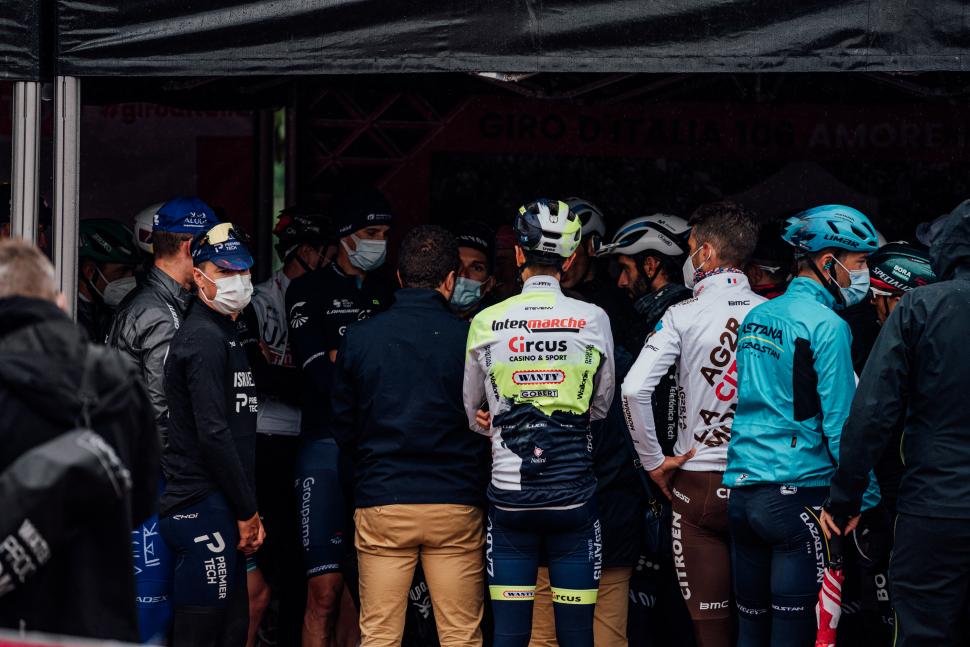
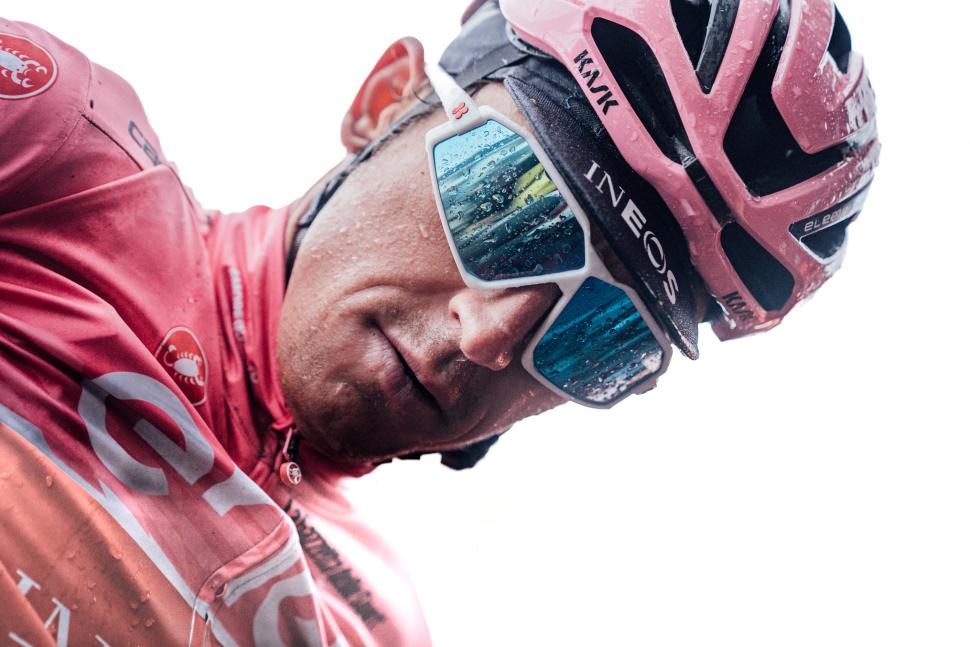
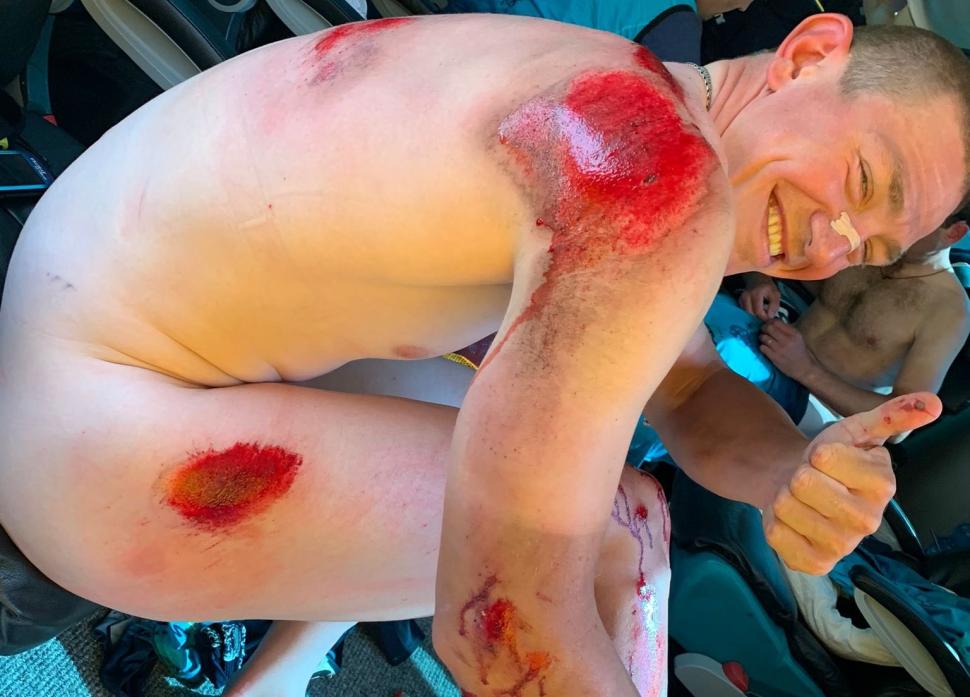
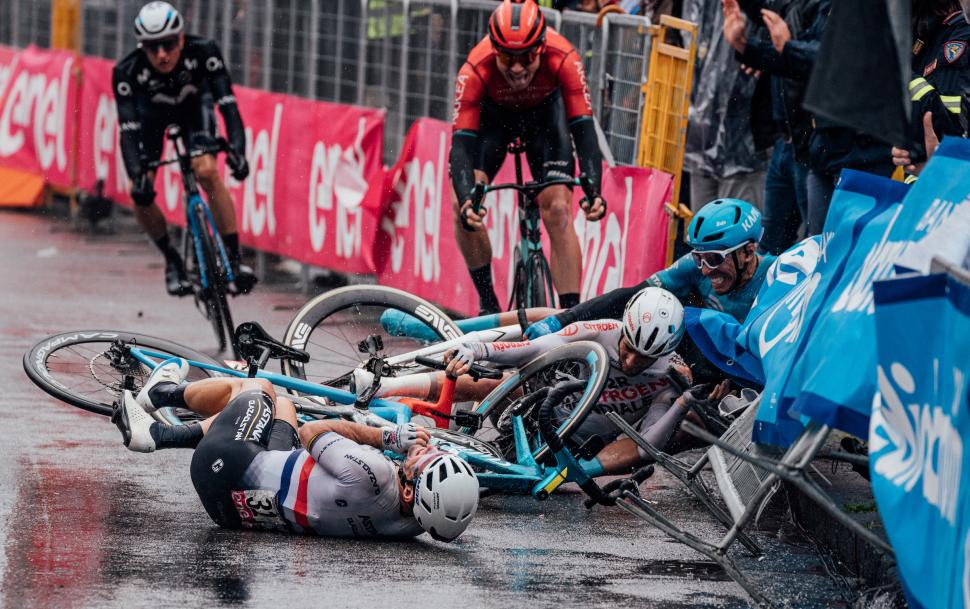
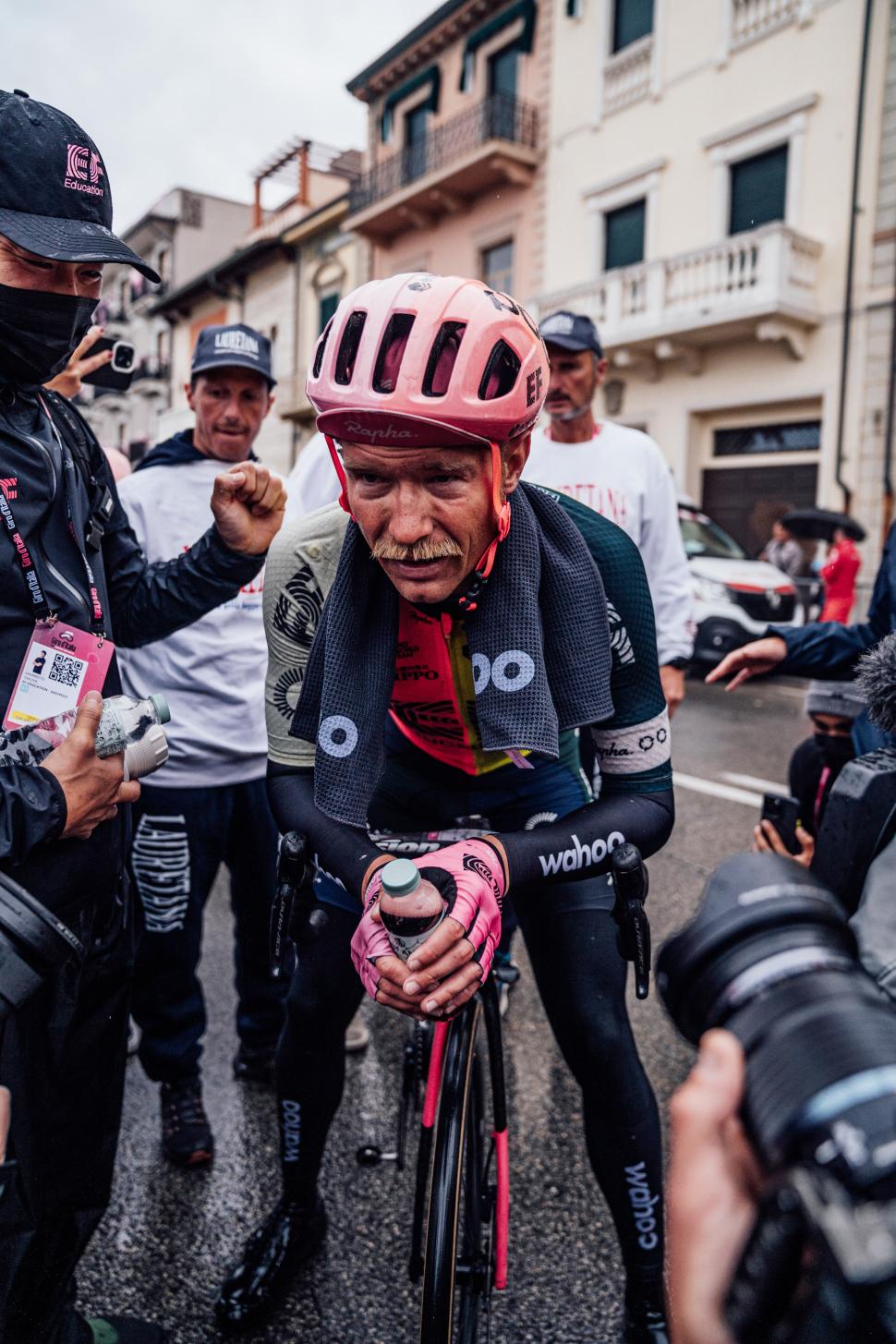
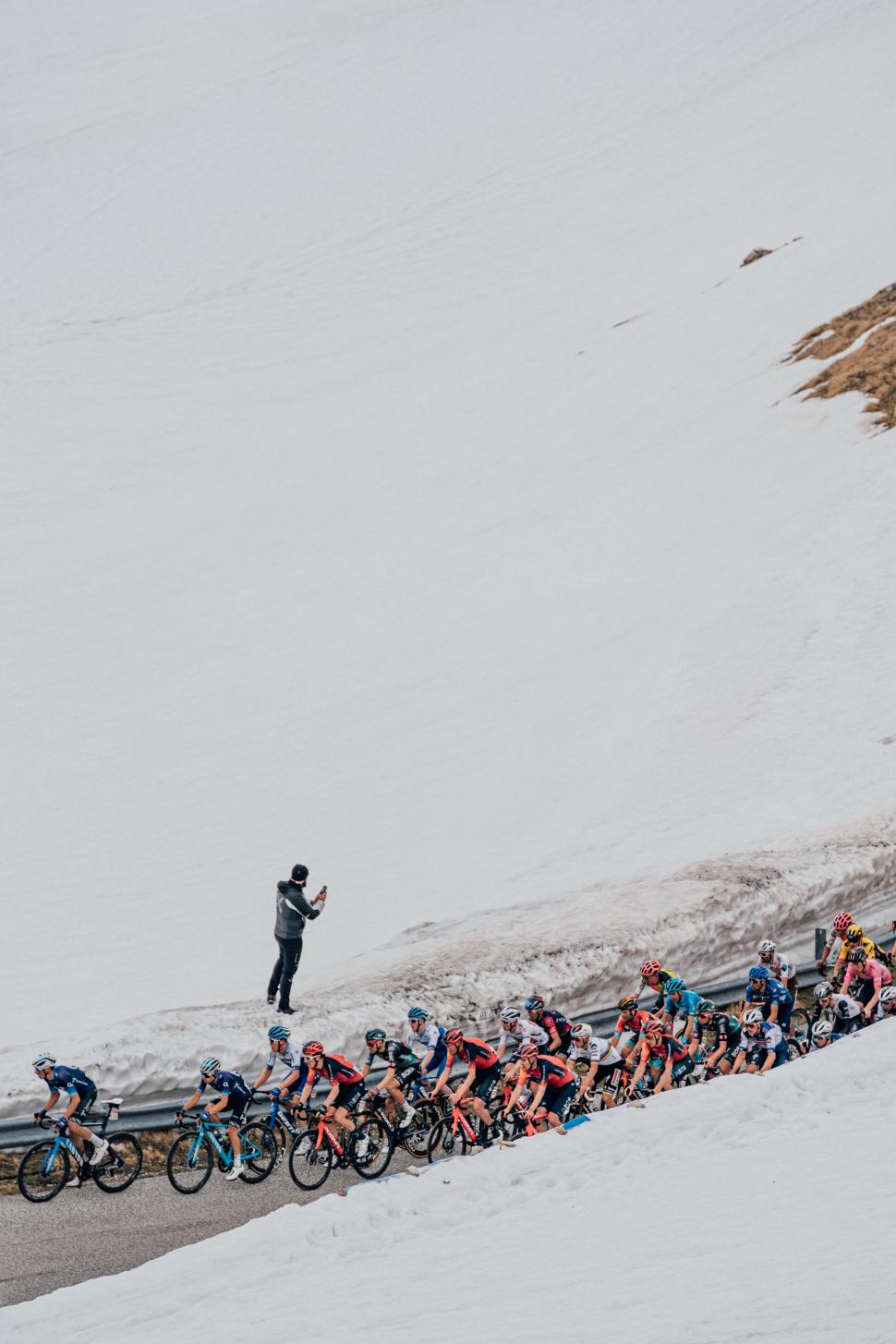
Add new comment
11 comments
Well said Ryan.
Interesting to hear Sean Kelly say on a podcast that he will not ride in the rain.
What about Miguel Indurain?
As a rider, he made a point of going training no matter the weather. In his autobiography he writes disparagingly about a team-mate who stayed with him in Ireland, who wouldn't go out with him in the Irish rain.
As an ex-cyclist, in his time leading the An Post team, there are photos of him going out riding despite rain that flooded roads, water over his rims - leading by example.
So... didn't hear that podcast and I don't know what he's preaching now, but it's not what he preached or practiced before by sounds of it.
I remember an interview with him back in the 80s when he was despairing about how soft young riders were becoming, "They come to me all proud and say I did 120 miles yesterday morning and I look at them and say yes, and what did you do in the afternoon and they look at me like I'm crazy..."
I don't know of any premise of a societal shift in attitude towards modern riders of going soft. This just feels like another of the media's habit of creating content based on the tweets of a vocal minority of contrarians and attention seekers and spinning it as the public debate du jour.
First, like you said yourself, you don't know. What it 'feels like' to you might be completely wrong.
Second, even if it is a vocal minority, fact still is that riders, like Evenepoel's reaction clearly shows, are impacted by it. And it is not a stretch to imagine that race organisers etc. take that 'road racing should stay tough as nails' sentiment with them in their decision making. It might also push a rider that is sick, or has fallen hard to continue where that really is bad for them, just for not to be regarded as 'weak', as that would be damaging for their future career.
So even if it is a vocal minority, even if it is 'just the media stirring things up', it is still a development that needs to be adressed.
True and very eloquently put
The comparison to football is interesting. If pro cyclists were able to gain an advantage by feigning injury... I am sure that they would do exactly that.
One does sometimes see a rider dropping back to the medical car with what looks like a very minor abrasion, spending a couple of kilometres holding on before getting a sticking plaster and then drafting the cars back up to the peloton having had a nice few minutes' rest...
I've often wondered if a rider might "take a dive" in the last 3 km; a race leader who has nothing left to give and only a handful of seconds on the second-place rider who sees the second-place rider launch an attack at 2.9km that he knows he can't stay with to the line might possibly be tempted to slide off in a corner. I know we've already had controversy about last 3 km mechanicals with Remco's puncture in the Vuelta but they could be mitigated somewhat if the commisaires immediately took control of the bike and examined it, proving someone deliberately fell off would be far harder.
Bravo